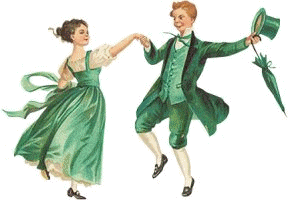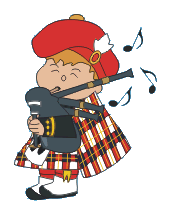Life of St. Patrick / Vie de Saint Patrick
- Kevin Gillan
- Mar 15, 2021
- 6 min read
Updated: Mar 15, 2021
The Patron Saint of Ireland, Patrick was born in Britain of a Roman family. At age 16 he was captured by Irish raiders from the villa of his father, Calpurnius, a deacon and local official, and sold into slavery in Ireland.
Patrick worked as a shepherd under horrible conditions for six years drawing comfort in prayer and the Christian faith, that so many of his people had abandoned under Roman rule. Patrick had a dream that instructed him flee his captivity and head South where a ship would be waiting for him. He travelled over 200 miles to Wexford town where, sure enough, a ship was waiting to enable his escape. During the next seven years, Patrick furthered his education and studied Christianity in the Lerin Monastery in France. He returned to England as a priest. Again a dream greatly influenced him when he became convinced that the Irish people were calling out to him to return to the land of his servitude. He went to the Monastery in Auxerre where it was decided that a mission should be sent to Ireland. Patrick was not selected for this task to his great disappointment. The monk that was selected was called Paladius, but he died before he could reach Ireland and a second mission was decided upon. Patrick was made a Bishop by Pope Celestine in the year 432 and, together with a small band of followers, travelled to Ireland to commence the conversion. Patrick confronted the most powerful man in Ireland Laoghaire, The High King of Tara as he knew that if he could gain his support that he would be safe to spread the word throughout Ireland. To get his attention Patrick and his followers lit a huge fire to mark the commencement of Spring. Tradition had it that no fire was to be lit until the Kings fire was complete, but Patrick defied this rule and courted the confrontation with the King. The King rushed into action and travelled with the intention of war against the holy delegation. Patrick calmed the King and with quiet composure impressed the King that he had no other intention than that of spreading the word of the Gospel. The King accepted the missionary, much to the dismay of the Druids who feared for their own power and position in the face of this new threat. They commanded that he make snow fall. Patrick declined to do so stating that this was Gods work. Immediately it began to snow, only stopping when Patrick blessed himself. Still trying to convince the King of his religion Patrick grasped at some Shamrock growing on the ground. He explained that there was but one stem on the plant, but three branches of the leaf, representing the Blessed Trinity. The King was impressed with his sincerity and granted him permission to spread the word of his faith, although he did not convert to Christianity himself. Patrick and his followers were free to spread their faith throughout Ireland and did so to great effect. He drove paganism (symbolised by the snake) from the lands of Eireann. Patrick was tempted by the Devil whilst on a pilgrimage at Croagh Patrick. For his refusal to be tempted, God rewarded him with a wish. Patrick asked that the Irish be spared the horror of Judgement Day and that he himself be allowed to judge his flock. Thus, the legend that Ireland will disappear under a sea of water seven years before the final judgement, was born. Patrick died on March 17th in the year 461 at the age of 76. It is not known for sure where his remains were laid although Downpatrick in County Down in the North of Ireland is thought to be his final resting place. His influence is still felt to this day as Nations the world over commemorate him on March 17th of every year
Legends
Before the end of the 7th century, Patrick had become a legendary figure, and the legends have continued to grow. One of these would have it that he drove the snakes out of Ireland into the sea to their destruction. Another legend, probably the most popular, is that of the shamrock, explaining the concept of the Holy Trinity, three persons in one God, to an unbeliever by showing him the three-leaved plant with one stalk. Traditionally, Irishmen have worn shamrocks, the national flower of Ireland, in their lapels on St. Patrick's Day, March 17.

Vie de Saint Patrick
Le saint patron de l'Irlande, Patrick est né en Grande-Bretagne d'une famille romaine. À 16 ans, il a été capturé par des pillards irlandais de la villa de son père, Calpurnius, un diacre et fonctionnaire local, et vendu comme esclave en Irlande. Patrick a travaillé comme berger dans des conditions horribles pendant six ans, puisant du réconfort dans la prière et la foi chrétienne, que tant de ses gens avaient abandonnée sous la domination romaine. Patrick a fait un rêve qui lui a ordonné de fuir sa captivité et de se diriger vers le sud où un navire l'attendrait. Il a parcouru plus de 200 miles jusqu'à la ville de Wexford où, bien sûr, un navire attendait pour lui permettre de s'échapper. Au cours des sept années suivantes, Patrick a poursuivi ses études et a étudié le christianisme au monastère de Lérin en France. Il est retourné en Angleterre en tant que prêtre. Encore une fois, un rêve l'a grandement influencé quand il est devenu convaincu que le peuple irlandais l'appelait à retourner au pays de sa servitude. Il se rendit au monastère d'Auxerre où il fut décidé qu'une mission devait être envoyée en Irlande. Patrick n'a pas été sélectionné pour cette tâche à sa grande déception. Le moine sélectionné s'appelait Paladius, mais il mourut avant de pouvoir atteindre l'Irlande et une deuxième mission fut décidée. Patrick fut nommé évêque par le pape Célestine en 432 et, accompagné d'un petit groupe de fidèles, se rendit en Irlande pour commencer la conversion. Patrick a confronté l'homme le plus puissant d'Irlande Laoghaire, le haut roi de Tara, car il savait que s'il pouvait gagner son soutien, il serait sûr de passer le mot dans toute l'Irlande. Pour attirer son attention, Patrick et ses partisans ont allumé un immense feu pour marquer le début du printemps. La tradition voulait qu'aucun feu ne soit allumé jusqu'à ce que le feu des rois soit complet, mais Patrick a défié cette règle et a courtisé la confrontation avec le roi. Le roi se précipita dans l'action et voyagea avec l'intention de faire la guerre à la sainte délégation. Patrick a calmé le roi et, avec un calme calme, a impressionné le roi qu'il n'avait pas d'autre intention que celle de répandre la parole de l'Évangile. Le roi accepta le missionnaire, au grand désarroi des druides qui craignaient pour leur pouvoir et leur position face à cette nouvelle menace. Ils lui ont ordonné de faire tomber la neige. Patrick a refusé de le faire en déclarant que c'était l'œuvre de Dieu. Immédiatement, il a commencé à neiger, ne s'arrêtant que lorsque Patrick s'est béni. Essayant toujours de convaincre le roi de sa religion, Patrick saisit un trèfle poussant sur le sol. Il expliqua qu'il n'y avait qu'une tige sur la plante, mais trois branches de la feuille, représentant la Sainte Trinité. Le roi a été impressionné par sa sincérité et lui a accordé la permission de répandre la parole de sa foi, bien qu'il ne se soit pas converti au christianisme lui-même. Patrick et ses disciples étaient libres de répandre leur foi dans toute l'Irlande et l'ont fait avec grand succès. Il chassa le paganisme (symbolisé par le serpent) des terres d'Eireann. Patrick a été tenté par le diable lors d'un pèlerinage à Croagh Patrick. Pour son refus d'être tenté, Dieu l'a récompensé d'un souhait. Patrick a demandé que les Irlandais soient épargnés par l'horreur du Jour du Jugement et qu'il soit lui-même autorisé à juger son troupeau. Ainsi est née la légende selon laquelle l'Irlande disparaîtra sous une mer d'eau sept ans avant le jugement final. Patrick est décédé le 17 mars de l'année 461 à l'âge de 76 ans. On ne sait pas avec certitude où ses restes ont été déposés bien que Downpatrick dans le comté de Down dans le nord de l'Irlande soit considéré comme son dernier lieu de repos. Son influence se fait encore sentir à ce jour alors que les nations du monde entier le commémorent le 17 mars de chaque année. Légendes Avant la fin du 7ème siècle, Patrick était devenu une figure légendaire, et les légendes n'ont cessé de grandir. L'un de ceux-ci voudrait qu'il ait chassé les serpents d'Irlande dans la mer jusqu'à leur destruction. Une autre légende, probablement la plus populaire, est celle du trèfle, expliquant le concept de la Sainte Trinité, trois personnes en un seul Dieu, à un incroyant en lui montrant la plante à trois feuilles avec une tige. Traditionnellement, les Irlandais portaient des trèfles, la fleur nationale de l'Irlande, à leur revers le 17 mars, le jour de la Saint-Patrick.











Comments